1SS315TPH3F-Schottky diode
Toshiba Semiconductor and Storage
Schottky - Single 0.6pF @ 0.2V 1MHz 125°C TJ Tape & Reel (TR) SC-76, SOD-323









Schottky - Single 0.6pF @ 0.2V 1MHz 125°C TJ Tape & Reel (TR) SC-76, SOD-323
1SS315TPH3F is a RF Diode Schottky diode.Its maximum voltage is 5v and the maximum current is 30mA. This passage is going to introduce it from the perspectives of description, substitutes, and pinouts.
1SS315TPH3F Description
1SS315TPH3F, manufactured by Toshiba. Its category belongs to Schottky Diodes & Rectifiers. It is applied to many fields, like Automotive Infotainment & cluster Communications equipment Broadband fixed-line access Personal electronics Connected peripherals & printers. And the main parameters of this part is: Diode Schottky 5V 0.03A 2-Pin USC T/R. Additionally, it is green and compliant to RoHS (Lead-free / RoHS Compliant).
1SS315TPH3F is a kind of single Schottky diode. ts maximum voltage is 5v and the maximum current is 30mA. Its package is SC-76 or SOD-323.
1SS315TPH3F Manufacturer
Toshiba Corporation is a Japanese multinational conglomerate headquartered in Minato, Tokyo. Its diversified products and services include power, industrial and social infrastructure systems, elevators and escalators, electronic components, semiconductors, hard disk drives (HDD), printers, batteries, lighting, as well as IT solutions such as quantum cryptography.[3][4] It was one of the biggest manufacturers of personal computers, consumer electronics, home appliances, and medical equipment. As a semiconductor company and the inventor of flash memory, Toshiba had been one of the top 10 in the chip industry until its flash memory unit was spun off as Toshiba Memory, later Kioxia, in the late 2010s. Toshiba has several brands around the world that distributors may use as alternate names. Toshiba may also be known as the following names:
TOSH、TOS、SMK、TOSHIB、TOSHI、TSENG、Toshiba Semiconductor and Storage、TOSHIBA CORP、TOSHIBA CORPORATION、TSH、MARKTECH OPTOELECTRONICS、TOSHIBA ELECTRONICS、TOSHIBA ELECTRONIC COMPONENTS、TOSHIBA-PB FREE、TOSHIBA SEMI、TOSHIBA AMERICA、TOSHIBAPb
Toshiba America Electronic Components Inc、TOBHIBA、Toshiba America Electronic Components
TOSHIAB、Toshiba Memory America Inc、Toshiba Semiconductor、TSHBA、TOSHIBA ELECTRONICS ASIA LTD
1SS315TPH3F Applications
1SS315TPH3F can be applied in 3 fields:
1. Automotive: Advanced driver assistance systems, Body electronics&lighting, Hybrid, electric& power train systems, Infotainment&cluster
2. Communications equipment: Broadband fixed-line access, Datacom module, Wired networking, Wireless infrastructure
3. Personal electronics: Connected peripheral&printers, Data storage, Gaming, Home theater&entertainment, Mobile phones, PC¬ebooks, Portable electronics, Tablets, TV, Wearables(non-medical)
1SS315TPH3F Substitutes
| Part No. | Manufacturer | Substitutes Type |
| MMDL101T1G | Onsemi | Upgrade |
| SMS7621-040LF | Skyworks Solutions Inc. | Similar |
| MA40261 | MACOM Technology Solutions | Similar |
| SMS7630-079LF | Skyworks Solutions Inc. | Similar |
| SMS3922-001LF | Skyworks Solutions Inc. | Similar |
| SMMBD701LT1G | Onsemi | Similar |
| MMBD770T1G | Onsemi | Similar |
| MMBD301LT1G | Onsemi | Similar |
| MSS20-142-0402 | MACOM Technology Solutions | Similar |
| MA4E1338A1-1146T | MACOM Technology Solutions | Similar |
| CDF7621-000 | Skyworks Solutions Inc. | Similar |
| MA4E2502H-1246 | MACOM Technology Solutions | Similar |
| MA4E931Z2-1261A | MACOM Technology Solutions | Similar |
| MSS50-146-B10B | MACOM Technology Solutions | Similar |
1SS315TPH3F Alternate Part Numbers
1SS315 TPH3F/1SS315(TPH3,F)/1SS315(TPH3.F)/1SS315(TPH3F)/1SS315TPH3 F
CAD Modals
symbol
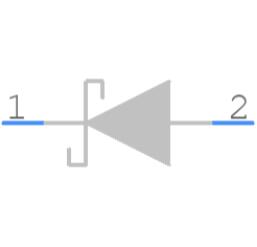
footprint
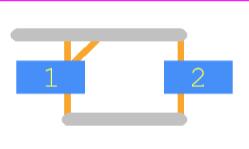
Specifications
- TypeParameter
- Factory Lead Time11 Weeks
- Contact Plating
Contact plating (finish) provides corrosion protection for base metals and optimizes the mechanical and electrical properties of the contact interfaces.
Copper, Silver, Tin - Mount
In electronic components, the term "Mount" typically refers to the method or process of physically attaching or fixing a component onto a circuit board or other electronic device. This can involve soldering, adhesive bonding, or other techniques to secure the component in place. The mounting process is crucial for ensuring proper electrical connections and mechanical stability within the electronic system. Different components may have specific mounting requirements based on their size, shape, and function, and manufacturers provide guidelines for proper mounting procedures to ensure optimal performance and reliability of the electronic device.
Surface Mount - Package / Case
refers to the protective housing that encases an electronic component, providing mechanical support, electrical connections, and thermal management.
SC-76, SOD-323 - Number of Pins2
- Operating Temperature
The operating temperature is the range of ambient temperature within which a power supply, or any other electrical equipment, operate in. This ranges from a minimum operating temperature, to a peak or maximum operating temperature, outside which, the power supply may fail.
125°C TJ - Packaging
Semiconductor package is a carrier / shell used to contain and cover one or more semiconductor components or integrated circuits. The material of the shell can be metal, plastic, glass or ceramic.
Tape & Reel (TR) - Published2009
- Part Status
Parts can have many statuses as they progress through the configuration, analysis, review, and approval stages.
Not For New Designs - Moisture Sensitivity Level (MSL)
Moisture Sensitivity Level (MSL) is a standardized rating that indicates the susceptibility of electronic components, particularly semiconductors, to moisture-induced damage during storage and the soldering process, defining the allowable exposure time to ambient conditions before they require special handling or baking to prevent failures
1 (Unlimited) - Base Part Number
The "Base Part Number" (BPN) in electronic components serves a similar purpose to the "Base Product Number." It refers to the primary identifier for a component that captures the essential characteristics shared by a group of similar components. The BPN provides a fundamental way to reference a family or series of components without specifying all the variations and specific details.
1SS315 - Max Current Rating
The "Max Current Rating" parameter in electronic components refers to the maximum amount of electrical current that the component can safely handle without being damaged. It is an important specification to consider when designing or selecting components for a circuit, as exceeding the maximum current rating can lead to overheating, malfunction, or even permanent damage to the component. The max current rating is typically provided in amperes (A) and is determined by the component's internal construction, materials used, and thermal characteristics. It is crucial to ensure that the current flowing through the component does not exceed this specified limit to maintain the component's reliability and longevity.
30mA - Element Configuration
The distribution of electrons of an atom or molecule (or other physical structure) in atomic or molecular orbitals.
Single - Diode Type
In electronic components, the parameter "Diode Type" refers to the specific type or configuration of a diode, which is a semiconductor device that allows current to flow in one direction only. There are various types of diodes, each designed for specific applications and functions. Common diode types include rectifier diodes, zener diodes, light-emitting diodes (LEDs), and Schottky diodes, among others. The diode type determines the diode's characteristics, such as forward voltage drop, reverse breakdown voltage, and maximum current rating, making it crucial for selecting the right diode for a particular circuit or application. Understanding the diode type is essential for ensuring proper functionality and performance in electronic circuits.
Schottky - Single - Forward Current
Current which flows upon application of forward voltage.
30mA - Max Reverse Leakage Current
Max Reverse Leakage Current refers to the maximum amount of current that can flow through a semiconductor device, such as a diode or transistor, when it is reverse biased. This current is an important parameter as it indicates the level of unintended current that can flow when the device is not conducting in the forward direction. High values of reverse leakage current can lead to power loss, reduced efficiency, and may affect the performance and reliability of electronic circuits. It is particularly critical in applications where precise current control and low power consumption are necessary.
25μA - Forward Voltage
the amount of voltage needed to get current to flow across a diode.
250mV - Max Repetitive Reverse Voltage (Vrrm)
The Max Repetitive Reverse Voltage (Vrrm) is a crucial parameter in electronic components, particularly in diodes and transistors. It refers to the maximum voltage that can be applied across the component in the reverse direction without causing damage. This parameter is important for ensuring the proper functioning and longevity of the component in circuits where reverse voltage may be present. Exceeding the Vrrm rating can lead to breakdown and failure of the component, so it is essential to carefully consider this specification when designing or selecting components for a circuit.
5V - Capacitance @ Vr, F
Capacitance @ Vr, F refers to the capacitance value of a capacitor measured at a specified rated voltage (Vr). It indicates how much electrical charge the capacitor can store per volt when subjected to this voltage. This parameter is essential for understanding the behavior of capacitors in circuits, particularly under different voltage conditions, and ensures that the component operates within its safe limits. The unit of measurement is Farads (F), which quantifies the capacitor's ability to hold an electrical charge.
0.6pF @ 0.2V 1MHz - Radiation Hardening
Radiation hardening is the process of making electronic components and circuits resistant to damage or malfunction caused by high levels of ionizing radiation, especially for environments in outer space (especially beyond the low Earth orbit), around nuclear reactors and particle accelerators, or during nuclear accidents or nuclear warfare.
No - RoHS Status
RoHS means “Restriction of Certain Hazardous Substances” in the “Hazardous Substances Directive” in electrical and electronic equipment.
RoHS Compliant
Trend Analysis
Inventary history in the last year

Datasheet PDF
- Datasheets :
Parts with Similar Specs
What is Schottky Barrier Diode (SBD)?
Schottky Barrier Diode (SBD) is a semiconductor device with low power consumption, high current, and high speed in recent years. Its reverse recovery time is extremely short (can be as small as a few nanoseconds), the forward guide voltage drop is only about 0.4V, while the rectifier current can reach several thousand amperes. These excellent characteristics are unmatched by fast recovery diodes. Medium and low-power Schottky rectifier diodes are mostly packaged.
How many pins does 1SS315TPH3F have?
2.
How to safely long run in a circuit?
3. Using continuously under heavy loads (e.g. the application of high temperature/current/voltage and the significant change in temperature, etc.) may cause this product to decrease in reliability significantly even if the operating conditions (i.e. operating temperature/current/voltage, etc.) are within the absolute maximum ratings. Please design the appropriate reliability upon reviewing the Toshiba Semiconductor Reliability Handbook (“Handling Precautions”/“Derating Concept and Methods”) and individual reliability data (i.e. reliability test report and estimated failure rate, etc)
Where is 1SS315TPH3F made from?
It comes from a Japanese company-Toshiba Corporation.
Can 1SS315TPH3F be operated in 100℃?
Yes, it can be operated between -55℃ and 125℃。
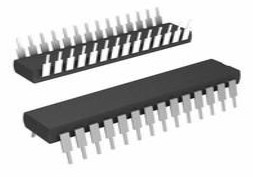 ATMEGA328P-PU Microcontroller: Features, Pinout, and Datasheet
ATMEGA328P-PU Microcontroller: Features, Pinout, and Datasheet23 September 202318657
 LM2902N Low-power quad operational amplifier:Pinout, Features, and Datasheet
LM2902N Low-power quad operational amplifier:Pinout, Features, and Datasheet13 September 20211938
 SG3525 Pulse width modulation controller IC: Datasheet, and Pinout
SG3525 Pulse width modulation controller IC: Datasheet, and Pinout13 October 202218417
 ATTINY13A-SSU Microcontroller: Features, Pinout and Datasheet
ATTINY13A-SSU Microcontroller: Features, Pinout and Datasheet17 February 20225151
 DAC0808 D/A converter IC: Alternatives, Pinout and Working principle
DAC0808 D/A converter IC: Alternatives, Pinout and Working principle16 September 20219801
 A Comprehensive Guide to LTC6945IUFD#TRPBF PLL Frequency Synthesizer
A Comprehensive Guide to LTC6945IUFD#TRPBF PLL Frequency Synthesizer06 March 2024231
 M16C/26A Group: Single-Chip 16-Bit CMOS Microcomputer Overview
M16C/26A Group: Single-Chip 16-Bit CMOS Microcomputer Overview28 February 202481
 TXS0104ERGYR: 4-Bit Bidirectional Voltage-Level Translator, Datasheet
TXS0104ERGYR: 4-Bit Bidirectional Voltage-Level Translator, Datasheet22 March 20221289
 Everything You Need to Know about NVMe
Everything You Need to Know about NVMe04 August 20214644
 Random Access Memory: Definition, Types and Working
Random Access Memory: Definition, Types and Working29 August 20208997
 What is a SAW Sensor? Types, Working and Applications
What is a SAW Sensor? Types, Working and Applications29 March 202118280
 The World's Top 10 Innovative LED Drivers
The World's Top 10 Innovative LED Drivers12 February 20223474
 Selection and Optimization of Peripheral Components for DC-DC Boost Regulator
Selection and Optimization of Peripheral Components for DC-DC Boost Regulator15 April 20221772
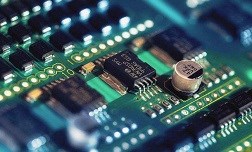 In Circuit Design, What are the Differences Between the 6 Types of Grounding?
In Circuit Design, What are the Differences Between the 6 Types of Grounding?25 March 20244187
 Analog-to-Digital Converters (ADCs): Decrypting Resolutions and Sampling Rates
Analog-to-Digital Converters (ADCs): Decrypting Resolutions and Sampling Rates24 February 20224155
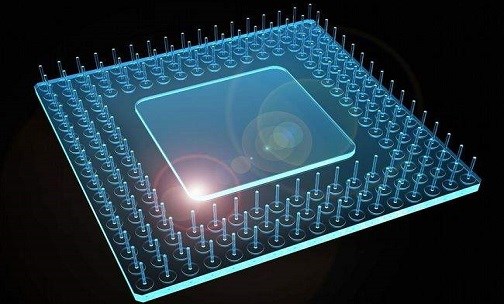 Semiconductor Equipment Industry Research
Semiconductor Equipment Industry Research25 March 20244269
Toshiba Semiconductor and Storage
In Stock: 2158
United States
China
Canada
Japan
Russia
Germany
United Kingdom
Singapore
Italy
Hong Kong(China)
Taiwan(China)
France
Korea
Mexico
Netherlands
Malaysia
Austria
Spain
Switzerland
Poland
Thailand
Vietnam
India
United Arab Emirates
Afghanistan
Åland Islands
Albania
Algeria
American Samoa
Andorra
Angola
Anguilla
Antigua & Barbuda
Argentina
Armenia
Aruba
Australia
Azerbaijan
Bahamas
Bahrain
Bangladesh
Barbados
Belarus
Belgium
Belize
Benin
Bermuda
Bhutan
Bolivia
Bonaire, Sint Eustatius and Saba
Bosnia & Herzegovina
Botswana
Brazil
British Indian Ocean Territory
British Virgin Islands
Brunei
Bulgaria
Burkina Faso
Burundi
Cabo Verde
Cambodia
Cameroon
Cayman Islands
Central African Republic
Chad
Chile
Christmas Island
Cocos (Keeling) Islands
Colombia
Comoros
Congo
Congo (DRC)
Cook Islands
Costa Rica
Côte d’Ivoire
Croatia
Cuba
Curaçao
Cyprus
Czechia
Denmark
Djibouti
Dominica
Dominican Republic
Ecuador
Egypt
El Salvador
Equatorial Guinea
Eritrea
Estonia
Eswatini
Ethiopia
Falkland Islands
Faroe Islands
Fiji
Finland
French Guiana
French Polynesia
Gabon
Gambia
Georgia
Ghana
Gibraltar
Greece
Greenland
Grenada
Guadeloupe
Guam
Guatemala
Guernsey
Guinea
Guinea-Bissau
Guyana
Haiti
Honduras
Hungary
Iceland
Indonesia
Iran
Iraq
Ireland
Isle of Man
Israel
Jamaica
Jersey
Jordan
Kazakhstan
Kenya
Kiribati
Kosovo
Kuwait
Kyrgyzstan
Laos
Latvia
Lebanon
Lesotho
Liberia
Libya
Liechtenstein
Lithuania
Luxembourg
Macao(China)
Madagascar
Malawi
Maldives
Mali
Malta
Marshall Islands
Martinique
Mauritania
Mauritius
Mayotte
Micronesia
Moldova
Monaco
Mongolia
Montenegro
Montserrat
Morocco
Mozambique
Myanmar
Namibia
Nauru
Nepal
New Caledonia
New Zealand
Nicaragua
Niger
Nigeria
Niue
Norfolk Island
North Korea
North Macedonia
Northern Mariana Islands
Norway
Oman
Pakistan
Palau
Palestinian Authority
Panama
Papua New Guinea
Paraguay
Peru
Philippines
Pitcairn Islands
Portugal
Puerto Rico
Qatar
Réunion
Romania
Rwanda
Samoa
San Marino
São Tomé & Príncipe
Saudi Arabia
Senegal
Serbia
Seychelles
Sierra Leone
Sint Maarten
Slovakia
Slovenia
Solomon Islands
Somalia
South Africa
South Sudan
Sri Lanka
St Helena, Ascension, Tristan da Cunha
St. Barthélemy
St. Kitts & Nevis
St. Lucia
St. Martin
St. Pierre & Miquelon
St. Vincent & Grenadines
Sudan
Suriname
Svalbard & Jan Mayen
Sweden
Syria
Tajikistan
Tanzania
Timor-Leste
Togo
Tokelau
Tonga
Trinidad & Tobago
Tunisia
Turkey
Turkmenistan
Turks & Caicos Islands
Tuvalu
U.S. Outlying Islands
U.S. Virgin Islands
Uganda
Ukraine
Uruguay
Uzbekistan
Vanuatu
Vatican City
Venezuela
Wallis & Futuna
Yemen
Zambia
Zimbabwe






